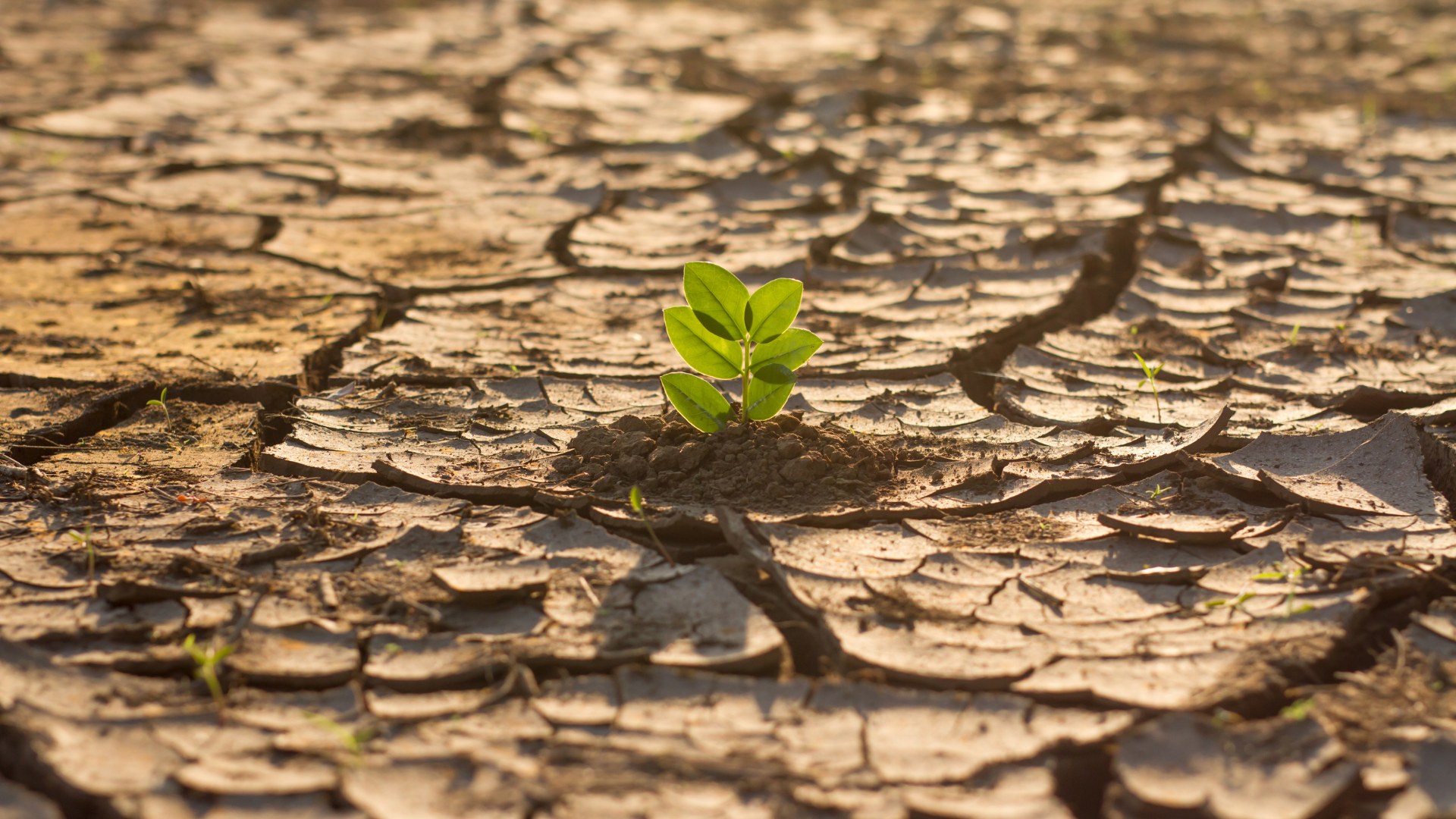.jpeg)
In 2015, almost 200 countries pledged to control greenhouse gas (GHGs) emissions to limit global warming to 2° by 2100 from pre-industrial levels. Seven years on, reports are circulating that on the current trajectory that number is more likely to be nearer 3° on average. Against the backdrop of COP27, are we heading down a menacing one-way street?
In this article, Roger Lewis, Downing’s Head of ESG, analyses the role of investors in mitigating climate change and whether the various COPs are focusing minds.
Context in numbers
There are headline numbers when we speak about climate change. A target of two degrees above pre-industrial levels from the 1750s is considered ‘safe’. Anthropogenic human activity releases over 52 billion tonnes of GHGs into the atmosphere each year. Real estate is responsible for 39% of these emissions, and other guilty sectors include steel, cement, agriculture and transport.
Parts per million (ppm) shows the concentration of GHGs and is a direct measure for both the target and activity. When we headed into this year’s COP27, we were at 416ppm.
There is one additional percentage number that is particularly pertinent to COP27 – or its full name: the 27th Conference of the Parties to the 1992 UN Framework Convention on Climate Change. This year’s conference is being held in Egypt. Africa, as a whole, is only responsible for 3% of the 52 billion carbon emissions or tCO2e.
Nevertheless, alongside other developing markets, Africa will be among the first to face many of the impacts of a warmer planet. For example, coastal erosion and inundation of nearby homes or businesses in Atlantic countries like Ghana and Nigeria and never-before-seen droughts making survival impossible for people’s crops or camel and goat herds in the Sahel.
A tale of two challenges
This brings us to the key theme of COP27: accountability. A quick review of COP history shows that this hasn’t been a priority, despite the original UNFCCC Agreement clearly recognising “…that low-lying and other small island countries, …with arid and semi-arid areas or areas liable to floods, drought and desertification, and developing countries are particularly vulnerable to the adverse effects of climate change. Recognizing the special difficulties of those countries…”.

COP1 in 1995 produced the ‘Berlin Mandate’ and laid foundations for emissions reporting, which COP3 in 1997 turned into the ‘Kyoto Protocol’. This agreed on the six types of greenhouse gases but focused mostly on developed markets. Fast-forward to Copenhagen (2009), where the centre stage again was not emerging markets, but the USA and China as the world’s highest emitters. In addition, the ‘Accord’ had no actual impact, only voluntary pledges.
The great success of COP21 in Paris (2015) is also its greatest challenge. The new climate politics is being ‘masters of your own fate’ and determining national contributions (called NDCs) to reduce emissions. This now included developing countries, but importantly for COP27, it allows them to adjust their contributions based on opinions of fairness and financial or technological contributions that they receive in return. This importance is massively increased as these countries are now industrialising and gaining more middle classes, at the expense of increased emissions – just like Europe and then the USA did throughout history.
For any climate watchers, the UN Environment Programme’s annual Emissions Gap Report is a valuable resource in addition to the ppm above. The Emissions Report conclusion on the ‘Glasgow Pact’ from COP26 in 2021 was:
“...there has been very limited progress in reducing the immense emissions gap for 2030… between the emissions reductions promised and the emissions reductions needed to achieve the temperature goal of the Paris Agreement.”
This is accurate and perhaps not surprising as there was little legally binding a commitment to enforcing it. So emissions and ppm, continue their upward trend.
Instead of decreasing from 52bn tonnes to 37bn by 2030 to achieve the 2° commitment, the latest climate policies and NDCs, including those revised post-COP26, suggest only a 0.5bn tonne reduction. When translating this to a temperature, it will make the 2100’s the 2.6°+ century.
If this doesn’t seem high or significant, some of the extreme weather over the last two years gives a peek into what this future might look like. We’ve had floods in Pakistan, temperature records and dry rivers in Europe, and heat waves and bubbles in China, the USA and Turkey.
Or if a response is “I won’t be around then”, as a provider of estate and inheritance investment, many of Downing’s customers’ grandchildren will themselves be retiring into this world.
So, there are two clear challenges. One is the ethics of climate change - which has often been overlooked. The second is the limited success in climate change mitigation despite all the hype in Glasgow last year. Investors, as providers of equity and debt, can play a role in overcoming both.

The investor response
Adaptation, building resilience and adjusting life to known impacts can contribute to the first challenge. Some solutions are well-known and progressing, like flood defences, hardy crops that require less water and early warning systems for extreme weather.
Something that’s often overlooked is the importance of training and education, particularly for women and younger generations in developing markets. Taking herds to graze elsewhere or at different times, trying new irrigation systems, and preparing food and plans for an emergency, will also minimise the impact of the 3° world.
This all requires capital. Some governments committed to provide a percentage of GDP after previous COPs. Given the scale and expertise required, there are opportunities for private investment too: venture capital providers, or blended finance together with multilateral development finance institutions. For these, integrating material environmental, social and governance factors into decisions alongside risk and return is now common.
Specific adaptation objectives are being achieved; climate analysis, investee engagement, reporting and transparency are needed. Objectives can include a transition for displaced workers or communities, or delivering on targets from the UN Sustainable Development Goals.
Despite the limited success of COP26 at a national level, there has been activity and progress at the investor level since November 2021. The Deforestation Pact requires a massive land area for new trees. However, Land Use & Land Change are important considerations for real asset investors, with collaborations and ESG scorecards looking at commodity-driven deforestation, emissions from agriculture and natural climate solutions.
Commitments for standardisation and transparency have led to consultations and proposals by the International Sustainability Standards Board and the FCA - with labelling and disclosures due in 2023. Likewise, for biodiversity, investors are piloting nature-related financial disclosures, which are due next year.
Notwithstanding geopolitics, the phasing out of fossil fuels from investment portfolios through divesting, or perhaps more common now through voice and engaging, continues. Climate change mitigation through renewable wind, solar and hydro energy also continues, with green, net zero and energy security strategies all pushing up the gigawatt target number by 2030.
Integrating climate factors, the varied past and future COP outputs, investment, engagement and reporting activity are all factors that will continue this trend of progress.
However, challenges that need to be continually addressed remain for investors. Given the increasing dependency on renewable energy, when will material technological developments in battery storage be realised to overcome the intermittency and maintain a high power-to-power ratio?
In November 2021, the ppm was 414; what will it be next year?
And finally, in November 2023, what will the UNEP’s Emissions Gap Report say, especially as COP28 is the global stock take of all countries’ NDCs, commitments, ambitions and overall seriousness to climate change?
The 1.n° 2023
There will be headwinds between now and COP28. The UK recently held a net zero review. Does this signal a risk of diluting previous commitments, given the uncertainty and other priorities like GDP, or will it advance the Green Finance Strategy?
In the UK, the Climate Change Committee’s annual review in June showed progress was needed in agriculture, land use and certain other sectors. But will there be any? If gas is a generally accepted bridge fuel, do the IEA’s warnings for winter 2023 mean that the bridge will be extended even further? Or even worse, will we revert to coal?
Since 1995, we have seen various outputs from COPs. COP27’s output is unknown and certainly won’t conclude the conferences. But what is certain is that there won’t be the ‘Egypt Magic Answer’. Instead, it will require a pragmatic interpretation of the multi-faceted risks and opportunities of climate change, and direction on the outstanding questions listed above. What is clear is that climate change needs a response from whichever sector or organisation you represent.
Find out more about sustainability at Downing here.
In 2015, almost 200 countries pledged to control greenhouse gas (GHGs) emissions to limit global warming to 2° by 2100 from pre-industrial levels. Seven years on, reports are circulating that on the current trajectory that number is more likely to be nearer 3° on average. Against the backdrop of COP27, are we heading down a menacing one-way street?
In this article, Roger Lewis, Downing’s Head of ESG, analyses the role of investors in mitigating climate change and whether the various COPs are focusing minds.
Context in numbers
There are headline numbers when we speak about climate change. A target of two degrees above pre-industrial levels from the 1750s is considered ‘safe’. Anthropogenic human activity releases over 52 billion tonnes of GHGs into the atmosphere each year. Real estate is responsible for 39% of these emissions, and other guilty sectors include steel, cement, agriculture and transport.
Parts per million (ppm) shows the concentration of GHGs and is a direct measure for both the target and activity. When we headed into this year’s COP27, we were at 416ppm.
There is one additional percentage number that is particularly pertinent to COP27 – or its full name: the 27th Conference of the Parties to the 1992 UN Framework Convention on Climate Change. This year’s conference is being held in Egypt. Africa, as a whole, is only responsible for 3% of the 52 billion carbon emissions or tCO2e.
Nevertheless, alongside other developing markets, Africa will be among the first to face many of the impacts of a warmer planet. For example, coastal erosion and inundation of nearby homes or businesses in Atlantic countries like Ghana and Nigeria and never-before-seen droughts making survival impossible for people’s crops or camel and goat herds in the Sahel.
A tale of two challenges
This brings us to the key theme of COP27: accountability. A quick review of COP history shows that this hasn’t been a priority, despite the original UNFCCC Agreement clearly recognising “…that low-lying and other small island countries, …with arid and semi-arid areas or areas liable to floods, drought and desertification, and developing countries are particularly vulnerable to the adverse effects of climate change. Recognizing the special difficulties of those countries…”.

COP1 in 1995 produced the ‘Berlin Mandate’ and laid foundations for emissions reporting, which COP3 in 1997 turned into the ‘Kyoto Protocol’. This agreed on the six types of greenhouse gases but focused mostly on developed markets. Fast-forward to Copenhagen (2009), where the centre stage again was not emerging markets, but the USA and China as the world’s highest emitters. In addition, the ‘Accord’ had no actual impact, only voluntary pledges.
The great success of COP21 in Paris (2015) is also its greatest challenge. The new climate politics is being ‘masters of your own fate’ and determining national contributions (called NDCs) to reduce emissions. This now included developing countries, but importantly for COP27, it allows them to adjust their contributions based on opinions of fairness and financial or technological contributions that they receive in return. This importance is massively increased as these countries are now industrialising and gaining more middle classes, at the expense of increased emissions – just like Europe and then the USA did throughout history.
For any climate watchers, the UN Environment Programme’s annual Emissions Gap Report is a valuable resource in addition to the ppm above. The Emissions Report conclusion on the ‘Glasgow Pact’ from COP26 in 2021 was:
“...there has been very limited progress in reducing the immense emissions gap for 2030… between the emissions reductions promised and the emissions reductions needed to achieve the temperature goal of the Paris Agreement.”
This is accurate and perhaps not surprising as there was little legally binding a commitment to enforcing it. So emissions and ppm, continue their upward trend.
Instead of decreasing from 52bn tonnes to 37bn by 2030 to achieve the 2° commitment, the latest climate policies and NDCs, including those revised post-COP26, suggest only a 0.5bn tonne reduction. When translating this to a temperature, it will make the 2100’s the 2.6°+ century.
If this doesn’t seem high or significant, some of the extreme weather over the last two years gives a peek into what this future might look like. We’ve had floods in Pakistan, temperature records and dry rivers in Europe, and heat waves and bubbles in China, the USA and Turkey.
Or if a response is “I won’t be around then”, as a provider of estate and inheritance investment, many of Downing’s customers’ grandchildren will themselves be retiring into this world.
So, there are two clear challenges. One is the ethics of climate change - which has often been overlooked. The second is the limited success in climate change mitigation despite all the hype in Glasgow last year. Investors, as providers of equity and debt, can play a role in overcoming both.

The investor response
Adaptation, building resilience and adjusting life to known impacts can contribute to the first challenge. Some solutions are well-known and progressing, like flood defences, hardy crops that require less water and early warning systems for extreme weather.
Something that’s often overlooked is the importance of training and education, particularly for women and younger generations in developing markets. Taking herds to graze elsewhere or at different times, trying new irrigation systems, and preparing food and plans for an emergency, will also minimise the impact of the 3° world.
This all requires capital. Some governments committed to provide a percentage of GDP after previous COPs. Given the scale and expertise required, there are opportunities for private investment too: venture capital providers, or blended finance together with multilateral development finance institutions. For these, integrating material environmental, social and governance factors into decisions alongside risk and return is now common.
Specific adaptation objectives are being achieved; climate analysis, investee engagement, reporting and transparency are needed. Objectives can include a transition for displaced workers or communities, or delivering on targets from the UN Sustainable Development Goals.
Despite the limited success of COP26 at a national level, there has been activity and progress at the investor level since November 2021. The Deforestation Pact requires a massive land area for new trees. However, Land Use & Land Change are important considerations for real asset investors, with collaborations and ESG scorecards looking at commodity-driven deforestation, emissions from agriculture and natural climate solutions.
Commitments for standardisation and transparency have led to consultations and proposals by the International Sustainability Standards Board and the FCA - with labelling and disclosures due in 2023. Likewise, for biodiversity, investors are piloting nature-related financial disclosures, which are due next year.
Notwithstanding geopolitics, the phasing out of fossil fuels from investment portfolios through divesting, or perhaps more common now through voice and engaging, continues. Climate change mitigation through renewable wind, solar and hydro energy also continues, with green, net zero and energy security strategies all pushing up the gigawatt target number by 2030.
Integrating climate factors, the varied past and future COP outputs, investment, engagement and reporting activity are all factors that will continue this trend of progress.
However, challenges that need to be continually addressed remain for investors. Given the increasing dependency on renewable energy, when will material technological developments in battery storage be realised to overcome the intermittency and maintain a high power-to-power ratio?
In November 2021, the ppm was 414; what will it be next year?
And finally, in November 2023, what will the UNEP’s Emissions Gap Report say, especially as COP28 is the global stock take of all countries’ NDCs, commitments, ambitions and overall seriousness to climate change?
The 1.n° 2023
There will be headwinds between now and COP28. The UK recently held a net zero review. Does this signal a risk of diluting previous commitments, given the uncertainty and other priorities like GDP, or will it advance the Green Finance Strategy?
In the UK, the Climate Change Committee’s annual review in June showed progress was needed in agriculture, land use and certain other sectors. But will there be any? If gas is a generally accepted bridge fuel, do the IEA’s warnings for winter 2023 mean that the bridge will be extended even further? Or even worse, will we revert to coal?
Since 1995, we have seen various outputs from COPs. COP27’s output is unknown and certainly won’t conclude the conferences. But what is certain is that there won’t be the ‘Egypt Magic Answer’. Instead, it will require a pragmatic interpretation of the multi-faceted risks and opportunities of climate change, and direction on the outstanding questions listed above. What is clear is that climate change needs a response from whichever sector or organisation you represent.
Find out more about sustainability at Downing here.
In 2015, almost 200 countries pledged to control greenhouse gas (GHGs) emissions to limit global warming to 2° by 2100 from pre-industrial levels. Seven years on, reports are circulating that on the current trajectory that number is more likely to be nearer 3° on average. Against the backdrop of COP27, are we heading down a menacing one-way street?
In this article, Roger Lewis, Downing’s Head of ESG, analyses the role of investors in mitigating climate change and whether the various COPs are focusing minds.
Context in numbers
There are headline numbers when we speak about climate change. A target of two degrees above pre-industrial levels from the 1750s is considered ‘safe’. Anthropogenic human activity releases over 52 billion tonnes of GHGs into the atmosphere each year. Real estate is responsible for 39% of these emissions, and other guilty sectors include steel, cement, agriculture and transport.
Parts per million (ppm) shows the concentration of GHGs and is a direct measure for both the target and activity. When we headed into this year’s COP27, we were at 416ppm.
There is one additional percentage number that is particularly pertinent to COP27 – or its full name: the 27th Conference of the Parties to the 1992 UN Framework Convention on Climate Change. This year’s conference is being held in Egypt. Africa, as a whole, is only responsible for 3% of the 52 billion carbon emissions or tCO2e.
Nevertheless, alongside other developing markets, Africa will be among the first to face many of the impacts of a warmer planet. For example, coastal erosion and inundation of nearby homes or businesses in Atlantic countries like Ghana and Nigeria and never-before-seen droughts making survival impossible for people’s crops or camel and goat herds in the Sahel.
A tale of two challenges
This brings us to the key theme of COP27: accountability. A quick review of COP history shows that this hasn’t been a priority, despite the original UNFCCC Agreement clearly recognising “…that low-lying and other small island countries, …with arid and semi-arid areas or areas liable to floods, drought and desertification, and developing countries are particularly vulnerable to the adverse effects of climate change. Recognizing the special difficulties of those countries…”.

COP1 in 1995 produced the ‘Berlin Mandate’ and laid foundations for emissions reporting, which COP3 in 1997 turned into the ‘Kyoto Protocol’. This agreed on the six types of greenhouse gases but focused mostly on developed markets. Fast-forward to Copenhagen (2009), where the centre stage again was not emerging markets, but the USA and China as the world’s highest emitters. In addition, the ‘Accord’ had no actual impact, only voluntary pledges.
The great success of COP21 in Paris (2015) is also its greatest challenge. The new climate politics is being ‘masters of your own fate’ and determining national contributions (called NDCs) to reduce emissions. This now included developing countries, but importantly for COP27, it allows them to adjust their contributions based on opinions of fairness and financial or technological contributions that they receive in return. This importance is massively increased as these countries are now industrialising and gaining more middle classes, at the expense of increased emissions – just like Europe and then the USA did throughout history.
For any climate watchers, the UN Environment Programme’s annual Emissions Gap Report is a valuable resource in addition to the ppm above. The Emissions Report conclusion on the ‘Glasgow Pact’ from COP26 in 2021 was:
“...there has been very limited progress in reducing the immense emissions gap for 2030… between the emissions reductions promised and the emissions reductions needed to achieve the temperature goal of the Paris Agreement.”
This is accurate and perhaps not surprising as there was little legally binding a commitment to enforcing it. So emissions and ppm, continue their upward trend.
Instead of decreasing from 52bn tonnes to 37bn by 2030 to achieve the 2° commitment, the latest climate policies and NDCs, including those revised post-COP26, suggest only a 0.5bn tonne reduction. When translating this to a temperature, it will make the 2100’s the 2.6°+ century.
If this doesn’t seem high or significant, some of the extreme weather over the last two years gives a peek into what this future might look like. We’ve had floods in Pakistan, temperature records and dry rivers in Europe, and heat waves and bubbles in China, the USA and Turkey.
Or if a response is “I won’t be around then”, as a provider of estate and inheritance investment, many of Downing’s customers’ grandchildren will themselves be retiring into this world.
So, there are two clear challenges. One is the ethics of climate change - which has often been overlooked. The second is the limited success in climate change mitigation despite all the hype in Glasgow last year. Investors, as providers of equity and debt, can play a role in overcoming both.

The investor response
Adaptation, building resilience and adjusting life to known impacts can contribute to the first challenge. Some solutions are well-known and progressing, like flood defences, hardy crops that require less water and early warning systems for extreme weather.
Something that’s often overlooked is the importance of training and education, particularly for women and younger generations in developing markets. Taking herds to graze elsewhere or at different times, trying new irrigation systems, and preparing food and plans for an emergency, will also minimise the impact of the 3° world.
This all requires capital. Some governments committed to provide a percentage of GDP after previous COPs. Given the scale and expertise required, there are opportunities for private investment too: venture capital providers, or blended finance together with multilateral development finance institutions. For these, integrating material environmental, social and governance factors into decisions alongside risk and return is now common.
Specific adaptation objectives are being achieved; climate analysis, investee engagement, reporting and transparency are needed. Objectives can include a transition for displaced workers or communities, or delivering on targets from the UN Sustainable Development Goals.
Despite the limited success of COP26 at a national level, there has been activity and progress at the investor level since November 2021. The Deforestation Pact requires a massive land area for new trees. However, Land Use & Land Change are important considerations for real asset investors, with collaborations and ESG scorecards looking at commodity-driven deforestation, emissions from agriculture and natural climate solutions.
Commitments for standardisation and transparency have led to consultations and proposals by the International Sustainability Standards Board and the FCA - with labelling and disclosures due in 2023. Likewise, for biodiversity, investors are piloting nature-related financial disclosures, which are due next year.
Notwithstanding geopolitics, the phasing out of fossil fuels from investment portfolios through divesting, or perhaps more common now through voice and engaging, continues. Climate change mitigation through renewable wind, solar and hydro energy also continues, with green, net zero and energy security strategies all pushing up the gigawatt target number by 2030.
Integrating climate factors, the varied past and future COP outputs, investment, engagement and reporting activity are all factors that will continue this trend of progress.
However, challenges that need to be continually addressed remain for investors. Given the increasing dependency on renewable energy, when will material technological developments in battery storage be realised to overcome the intermittency and maintain a high power-to-power ratio?
In November 2021, the ppm was 414; what will it be next year?
And finally, in November 2023, what will the UNEP’s Emissions Gap Report say, especially as COP28 is the global stock take of all countries’ NDCs, commitments, ambitions and overall seriousness to climate change?
The 1.n° 2023
There will be headwinds between now and COP28. The UK recently held a net zero review. Does this signal a risk of diluting previous commitments, given the uncertainty and other priorities like GDP, or will it advance the Green Finance Strategy?
In the UK, the Climate Change Committee’s annual review in June showed progress was needed in agriculture, land use and certain other sectors. But will there be any? If gas is a generally accepted bridge fuel, do the IEA’s warnings for winter 2023 mean that the bridge will be extended even further? Or even worse, will we revert to coal?
Since 1995, we have seen various outputs from COPs. COP27’s output is unknown and certainly won’t conclude the conferences. But what is certain is that there won’t be the ‘Egypt Magic Answer’. Instead, it will require a pragmatic interpretation of the multi-faceted risks and opportunities of climate change, and direction on the outstanding questions listed above. What is clear is that climate change needs a response from whichever sector or organisation you represent.
Find out more about sustainability at Downing here.
In 2015, almost 200 countries pledged to control greenhouse gas (GHGs) emissions to limit global warming to 2° by 2100 from pre-industrial levels. Seven years on, reports are circulating that on the current trajectory that number is more likely to be nearer 3° on average. Against the backdrop of COP27, are we heading down a menacing one-way street?
In this article, Roger Lewis, Downing’s Head of ESG, analyses the role of investors in mitigating climate change and whether the various COPs are focusing minds.
Context in numbers
There are headline numbers when we speak about climate change. A target of two degrees above pre-industrial levels from the 1750s is considered ‘safe’. Anthropogenic human activity releases over 52 billion tonnes of GHGs into the atmosphere each year. Real estate is responsible for 39% of these emissions, and other guilty sectors include steel, cement, agriculture and transport.
Parts per million (ppm) shows the concentration of GHGs and is a direct measure for both the target and activity. When we headed into this year’s COP27, we were at 416ppm.
There is one additional percentage number that is particularly pertinent to COP27 – or its full name: the 27th Conference of the Parties to the 1992 UN Framework Convention on Climate Change. This year’s conference is being held in Egypt. Africa, as a whole, is only responsible for 3% of the 52 billion carbon emissions or tCO2e.
Nevertheless, alongside other developing markets, Africa will be among the first to face many of the impacts of a warmer planet. For example, coastal erosion and inundation of nearby homes or businesses in Atlantic countries like Ghana and Nigeria and never-before-seen droughts making survival impossible for people’s crops or camel and goat herds in the Sahel.
A tale of two challenges
This brings us to the key theme of COP27: accountability. A quick review of COP history shows that this hasn’t been a priority, despite the original UNFCCC Agreement clearly recognising “…that low-lying and other small island countries, …with arid and semi-arid areas or areas liable to floods, drought and desertification, and developing countries are particularly vulnerable to the adverse effects of climate change. Recognizing the special difficulties of those countries…”.

COP1 in 1995 produced the ‘Berlin Mandate’ and laid foundations for emissions reporting, which COP3 in 1997 turned into the ‘Kyoto Protocol’. This agreed on the six types of greenhouse gases but focused mostly on developed markets. Fast-forward to Copenhagen (2009), where the centre stage again was not emerging markets, but the USA and China as the world’s highest emitters. In addition, the ‘Accord’ had no actual impact, only voluntary pledges.
The great success of COP21 in Paris (2015) is also its greatest challenge. The new climate politics is being ‘masters of your own fate’ and determining national contributions (called NDCs) to reduce emissions. This now included developing countries, but importantly for COP27, it allows them to adjust their contributions based on opinions of fairness and financial or technological contributions that they receive in return. This importance is massively increased as these countries are now industrialising and gaining more middle classes, at the expense of increased emissions – just like Europe and then the USA did throughout history.
For any climate watchers, the UN Environment Programme’s annual Emissions Gap Report is a valuable resource in addition to the ppm above. The Emissions Report conclusion on the ‘Glasgow Pact’ from COP26 in 2021 was:
“...there has been very limited progress in reducing the immense emissions gap for 2030… between the emissions reductions promised and the emissions reductions needed to achieve the temperature goal of the Paris Agreement.”
This is accurate and perhaps not surprising as there was little legally binding a commitment to enforcing it. So emissions and ppm, continue their upward trend.
Instead of decreasing from 52bn tonnes to 37bn by 2030 to achieve the 2° commitment, the latest climate policies and NDCs, including those revised post-COP26, suggest only a 0.5bn tonne reduction. When translating this to a temperature, it will make the 2100’s the 2.6°+ century.
If this doesn’t seem high or significant, some of the extreme weather over the last two years gives a peek into what this future might look like. We’ve had floods in Pakistan, temperature records and dry rivers in Europe, and heat waves and bubbles in China, the USA and Turkey.
Or if a response is “I won’t be around then”, as a provider of estate and inheritance investment, many of Downing’s customers’ grandchildren will themselves be retiring into this world.
So, there are two clear challenges. One is the ethics of climate change - which has often been overlooked. The second is the limited success in climate change mitigation despite all the hype in Glasgow last year. Investors, as providers of equity and debt, can play a role in overcoming both.

The investor response
Adaptation, building resilience and adjusting life to known impacts can contribute to the first challenge. Some solutions are well-known and progressing, like flood defences, hardy crops that require less water and early warning systems for extreme weather.
Something that’s often overlooked is the importance of training and education, particularly for women and younger generations in developing markets. Taking herds to graze elsewhere or at different times, trying new irrigation systems, and preparing food and plans for an emergency, will also minimise the impact of the 3° world.
This all requires capital. Some governments committed to provide a percentage of GDP after previous COPs. Given the scale and expertise required, there are opportunities for private investment too: venture capital providers, or blended finance together with multilateral development finance institutions. For these, integrating material environmental, social and governance factors into decisions alongside risk and return is now common.
Specific adaptation objectives are being achieved; climate analysis, investee engagement, reporting and transparency are needed. Objectives can include a transition for displaced workers or communities, or delivering on targets from the UN Sustainable Development Goals.
Despite the limited success of COP26 at a national level, there has been activity and progress at the investor level since November 2021. The Deforestation Pact requires a massive land area for new trees. However, Land Use & Land Change are important considerations for real asset investors, with collaborations and ESG scorecards looking at commodity-driven deforestation, emissions from agriculture and natural climate solutions.
Commitments for standardisation and transparency have led to consultations and proposals by the International Sustainability Standards Board and the FCA - with labelling and disclosures due in 2023. Likewise, for biodiversity, investors are piloting nature-related financial disclosures, which are due next year.
Notwithstanding geopolitics, the phasing out of fossil fuels from investment portfolios through divesting, or perhaps more common now through voice and engaging, continues. Climate change mitigation through renewable wind, solar and hydro energy also continues, with green, net zero and energy security strategies all pushing up the gigawatt target number by 2030.
Integrating climate factors, the varied past and future COP outputs, investment, engagement and reporting activity are all factors that will continue this trend of progress.
However, challenges that need to be continually addressed remain for investors. Given the increasing dependency on renewable energy, when will material technological developments in battery storage be realised to overcome the intermittency and maintain a high power-to-power ratio?
In November 2021, the ppm was 414; what will it be next year?
And finally, in November 2023, what will the UNEP’s Emissions Gap Report say, especially as COP28 is the global stock take of all countries’ NDCs, commitments, ambitions and overall seriousness to climate change?
The 1.n° 2023
There will be headwinds between now and COP28. The UK recently held a net zero review. Does this signal a risk of diluting previous commitments, given the uncertainty and other priorities like GDP, or will it advance the Green Finance Strategy?
In the UK, the Climate Change Committee’s annual review in June showed progress was needed in agriculture, land use and certain other sectors. But will there be any? If gas is a generally accepted bridge fuel, do the IEA’s warnings for winter 2023 mean that the bridge will be extended even further? Or even worse, will we revert to coal?
Since 1995, we have seen various outputs from COPs. COP27’s output is unknown and certainly won’t conclude the conferences. But what is certain is that there won’t be the ‘Egypt Magic Answer’. Instead, it will require a pragmatic interpretation of the multi-faceted risks and opportunities of climate change, and direction on the outstanding questions listed above. What is clear is that climate change needs a response from whichever sector or organisation you represent.
Find out more about sustainability at Downing here.

Please fill out the form to download the full report
Downing LLP does not provide advice or make personal recommendations and investors are strongly urged to seek independent advice before investing. Investments offered on this website carry a higher risk than many other types of investment and prospective investors should be aware that capital is at risk and the value of their investment may go down as well as up. Any investment should only be made on the basis of the relevant product literature and your attention is drawn to the risk, fees and taxation factors contained therein. Tax treatment depends on individual circumstances of each investor and may be subject to change in the future. Past performance is not a reliable indicator of future performance. Downing LLP is authorised and regulated by the Financial Conduct Authority (Firm Reference Number 545025). Registered in England No. OC341575. Registered Office: Downing, 10 Lower Thames Street, London, EC3R 6AF.





.jpg)




